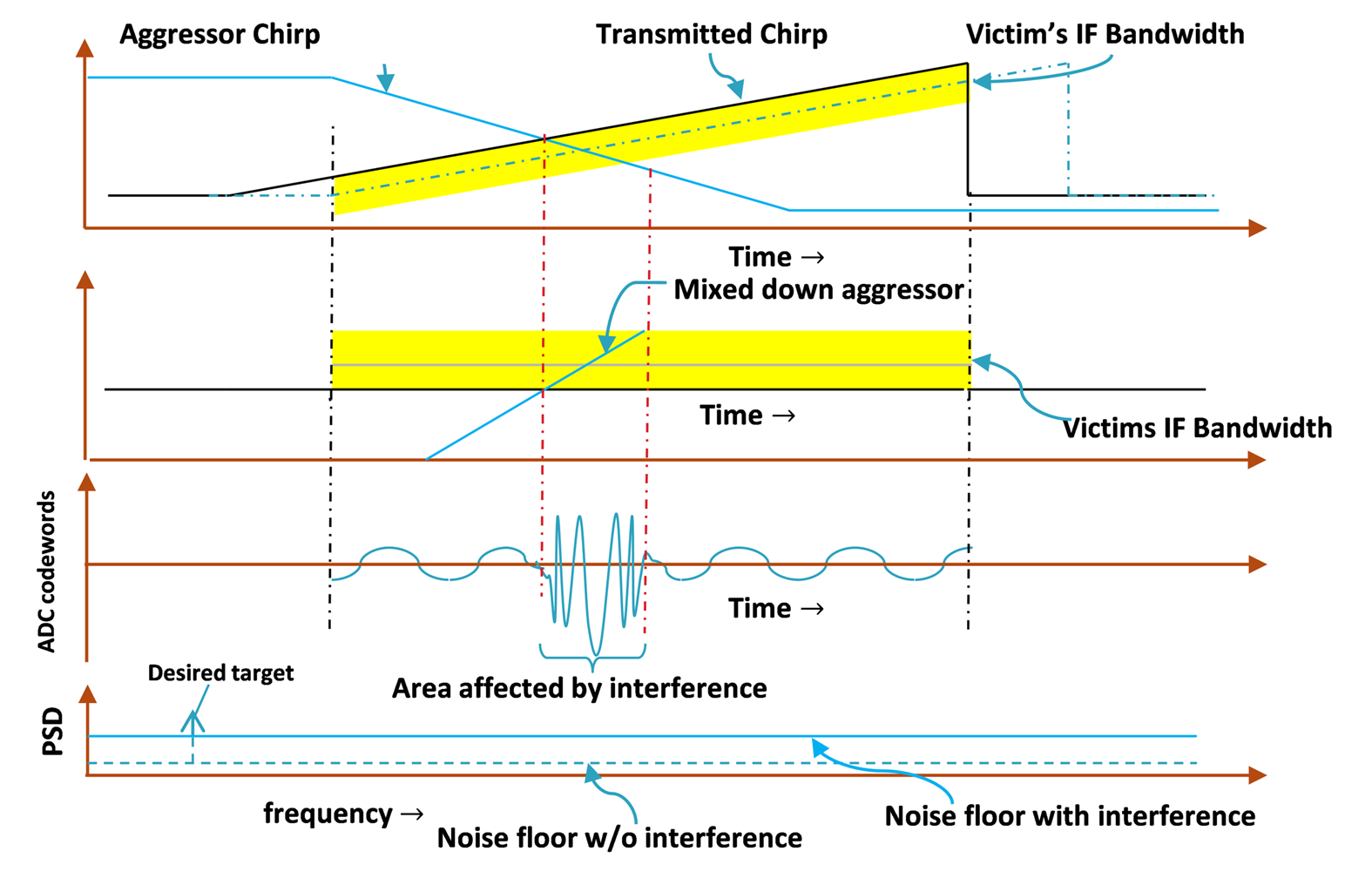SWRA662A January 2020 – September 2022 AWR1243 , AWR1443 , AWR1642 , AWR1843 , AWR1843AOP , AWR2243 , AWR6843 , AWR6843AOP , IWR1443 , IWR1642 , IWR1843 , IWR6443 , IWR6843 , IWR6843AOP
2.3.1 Crossing Interference
If the victim radar and the aggressor radar have different slopes, the two chirps can cross each other. When the crossing happens, the victim observes a crossing interference. The aggressor’s transmit signal will mix with victim’s transmit signal, and the energy of the aggressor is observable to the victim only if their frequency difference falls into victim’s IF bandwidth.
An example is given in Figure 2-2. As the aggressor's chirp crosses the victim’s transmitted chirp, the aggressor chirp's energy is observed as a chirp that rapidly moves through the IF bandwidth. It can be a constant slope moving from zero up to IF bandwidth (as shown in this example), or it can be a slope moving from IF down to zero frequency (which happens when the aggressor’s slope is bigger than the victim’s slope). In time domain, the region affected by interference resembles a glitch.
 Figure 2-2 Crossing Interference Causing a Glitch in the Time Domain Signal
Figure 2-2 Crossing Interference Causing a Glitch in the Time Domain SignalFinally, after a Fourier transform is applied on the ADC samples in the frequency domain, these crossing Interferers typically increase the noise floor and reduce the SNR of strong targets and bury weak targets, thereby affecting detection and creating momentary blind spots. The glitch duration (τGlitch) is governed by the victim’s IF bandwidth and the slopes of the victim (slopevictim) and the aggressor (slopeaggressor). It is given in Equation 3.

The glitch duration is typically small. For example, if the IF bandwidth is 12 MHz and the difference in slopes is 40 MHz/us, approximately 0.3 us, or four samples of the final ADC output, would be affected by interference.